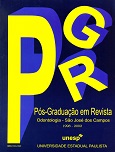Resistência ao cisalhamento entre ligas metálicas e materiais compostos para revestimento estético: cerômero e polímero de vidro
DOI:
https://doi.org/10.14295/bds.1999.v2i2.59Abstract
O propósito deste trabalho foi avaliar a resistência ao cisalhamento entre ligas metálicas (Au, NiCr e CoCr) e materiais estéticos indiretos (Artglass e Targis). Para tanto, utilizaram-se vinte estruturas metálicas de cada tipo de liga, cuja superfície a ser aplicada os materiais estéticos, receberam jateamento com óxido de alumínio de granulação de 250mm, antes da aplicação do sistema adesivo do correspondente polímero. Em seguida, o material estético foi aplicado no metal condicionado e polimerizado conforme as recomendações do fabricante. Os corpos-de-prova foram armazenadas em água destilada a 37ºC, por 24 horas, e submetidos à ciclagem térmica. Após o ensaio mecânico observou-se que o tipo de liga utilizada não influenciou os resultados e que o cerômero Targis apresentou maior resistência ao cisalhamento do que o polímero de vidro Artglass em todas as ligas testadas.
Downloads
Downloads
Published
How to Cite
Issue
Section
License
Brazilian Dental Science uses the Creative Commons (CC-BY 4.0) license, thus preserving the integrity of articles in an open access environment. The journal allows the author to retain publishing rights without restrictions.
=================




























